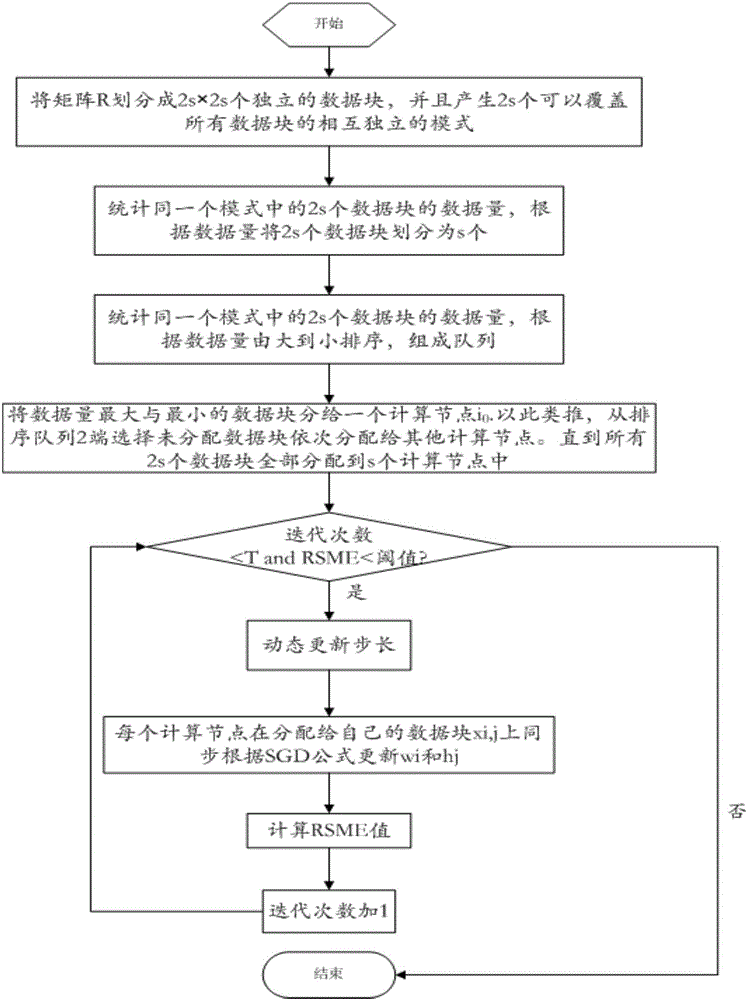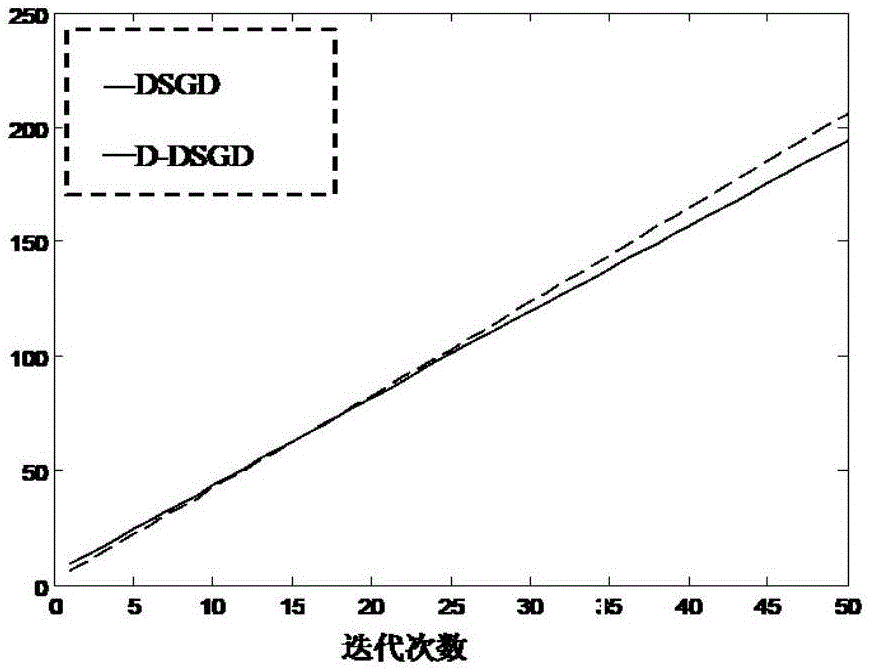Distributed nonnegative matrix decomposition method
A non-negative matrix decomposition and distributed technology, applied in the field of distributed non-negative matrix decomposition, can solve problems such as lock waiting, algorithm convergence and execution efficiency reduction, achieve good decomposition effect, reduce lock waiting time, and improve convergence sexual effect
- Summary
- Abstract
- Description
- Claims
- Application Information
AI Technical Summary
Problems solved by technology
Method used
Image
Examples
Embodiment Construction
[0025] Concrete realization process of the present invention is as follows:
[0026] Step 1: Read the original matrix data from the file system into the spark platform, and generate an elastic distributed dataset RDD through SparkContext. Perform a map operation on the data in the RDD, map each row of data "row_id, col_id, value" into triplet numerical data (row_id, col_id, vakue), and generate a new RDD (RDD1). Do some statistical operations on the new RRD, the basic information matrix_info of the statistical matrix, including the number of data and the total number of data contained in each row and column (total_col, total_row, total_N), and the maximum row id value of the word (max_row ) and the maximum column id (max_col).
[0027] Step 2: Divide the data blocks. If the number of computing nodes is S, the number of generated data blocks is 2S×2S. And pre-generate 2S mutually independent patterns. Read the data in RDD1, perform map() operation, and generate mode RDD2, th...
PUM
 Login to View More
Login to View More Abstract
Description
Claims
Application Information
 Login to View More
Login to View More - R&D
- Intellectual Property
- Life Sciences
- Materials
- Tech Scout
- Unparalleled Data Quality
- Higher Quality Content
- 60% Fewer Hallucinations
Browse by: Latest US Patents, China's latest patents, Technical Efficacy Thesaurus, Application Domain, Technology Topic, Popular Technical Reports.
© 2025 PatSnap. All rights reserved.Legal|Privacy policy|Modern Slavery Act Transparency Statement|Sitemap|About US| Contact US: help@patsnap.com



